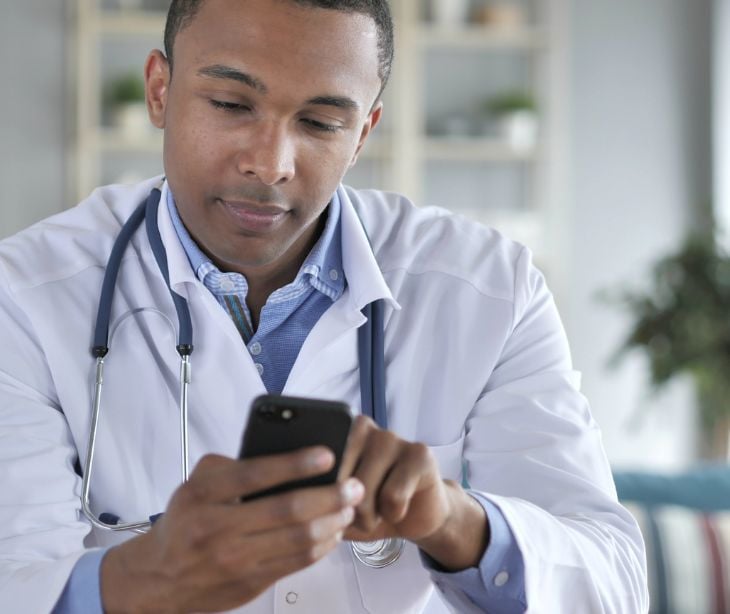2 min read
Can healthcare providers use personal devices for patient communication?
Liyanda Tembani
Nov 6, 2024 6:17:31 PM

Healthcare providers can use personal devices for patient communication, but it requires careful handling. Following HIPAA guidelines, providers must assess information sensitivity, ensure strong device security, and use secure communication channels.
The benefits of using personal devices
Personal devices, from smartphones to tablets, can empower healthcare providers by granting enhanced accessibility and efficiency. They can simplify processes, enabling rapid responses and improved care coordination. Being able to use personal devices can encourage patient engagement, creating a more connected healthcare experience. A study on smartphone use and security challenges in hospitals stressed that "The use of mobile devices offers a variety of options for physicians to communicate with each other, but also with hospital staff, patients, and professionals in other sectors, e.g., via calls, e-mails, messenger services, or video conferences. In addition, everyday work can easily be organized via mobile devices (e.g., using calendar functions or rosters)."
Recognizing risks in personal device use
Healthcare providers must know the risks of unauthorized access when using personal devices.
- The potential threat of device loss or theft poses a significant risk to protected health information (PHI).
- Vulnerabilities to malware and challenges in securing communication channels expose patient information to potential breaches.
In healthcare, patient data could be exposed to unsecured networks or public Wi-Fi connections. That can increase the chances of unauthorized access and data breaches. Taking appropriate security measures when using personal devices helps minimize these risks. There are considerations for providers to make when deciding to use personal devices for patient communication:
- Assess information sensitivity: Evaluate the nature and sensitivity of the information being exchanged. This involves categorizing data based on its level of confidentiality. That ensures that PHI isn't communicated via personal devices, unless using a secure service like Paubox.
- Ensure robust device security: Implement stringent security measures on personal devices for patient communication. That includes enabling encryption, setting up secure authentication methods like passcodes or biometrics, and regularly updating device security software to mitigate potential risks.
- Use HIPAA compliant communication channels: Opt for secure communication channels to transmit patient data. Use HIPAA compliant email services like Paubox or dedicated messaging applications that comply with healthcare regulations to maintain the confidentiality and integrity of patient information during transmission.
Mitigating risks and best practices
- Establish comprehensive policies and guidelines to manage the use of personal devices.
- Educate healthcare staff extensively on the risks, guidelines, and security measures associated with using personal devices to foster a culture of awareness and compliance.
- Continually monitor and enforce compliance measures to ensure that patient data remains secure.
- Conduct regular audits and assessments of device security protocols and communication channels to identify and promptly address vulnerabilities.
FAQs
What should providers do if they lose a personal device used for patient communication?
Immediately report the loss, remotely lock or wipe the device if possible, and notify IT or compliance teams to reduce risks.
Is using public Wi-Fi safe for patient communication on personal devices?
No, public Wi-Fi is generally not secure and can expose patient data; instead, use a secure network or mobile data connection.
How can providers ensure their devices stay HIPAA compliant over time?
Regularly update the device's operating system, security settings, and apps to protect against new vulnerabilities and maintain compliance.


.jpg)

%20-%202024-11-04T070521.738.jpg)